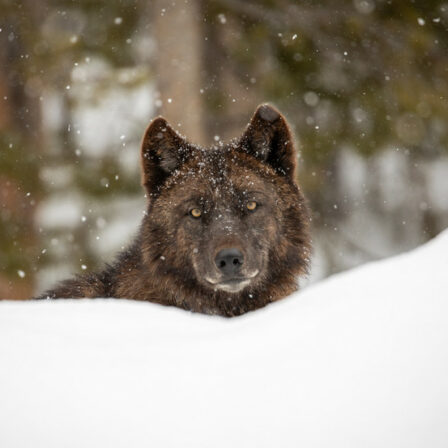Professor of Environmental Science, International Affairs and Public Policy George Mason University, Fairfax, VA
I grew up in a family dedicated to endangered species conservation. My maternal grandfather was Dr. C. Hart Merriam, founder and first head of the Biological Survey, which became the U.S. Fish and Wildlife Service. Hiking, camping, and pack trips in the wilderness—with the wonderful conservation and ecological insights and guidance of my parents—were an integral part of my early years.[pullquote]The result was one of the strongest pieces of legislation ever submitted to Congress. Representative Dingell presented the revised Endangered Species Act, which was passed by the House; a similar version was passed by the Senate. President Nixon signed the bill into law on December 28, 1973.[/pullquote]
On emerging from the U.S. Marine Corps in 1954, I was hired by the National Academy of Sciences to research African and Asian endangered species. This, in turn, led me to become the first staff ecologist of the Brussels-based International Union for Conservation of Nature and Natural Resources (IUCN), an organization highly concerned about endangered species.
In the early 1950s, I had the good fortune to do field research on the status of species and develop corresponding conservation plans. I participated in expeditions into many of the wildest places in the world to determine the status of species such as the Arabian oryx, Syrian wild ass, Asian lion, Kashmir stag, Arabian ostrich, and Javan, Sumatran, and Great Indian rhinos.
My first book, published in England in 1960, was entitled “A Look at Threatened Species”; many of my 300-some subsequent publications have addressed endangered species, either directly or in the context of broader conservation issues
In 1961, my wife Marty Hanes and I helped organize the Conference on Conservation in Modern African States in Arusha, Tanganyika (now Tanzania). At Arusha, I organized a side meeting to discuss poaching of endangered species. The consensus was that demand from Europe and the United States motivated poachers, and that an international agreement was needed. Two years later, Wolfgang Burhenne (IUCN’s legal advisor and Law Commission chair) and I presented a proposal for IUCN action. It passed unanimously, and over the next years, IUCN developed the basis of what became the Convention on International Trade in Endangered Species (CITES).
When Marty and I were with the Smithsonian Institution in the late 1960s, I also served as science advisor to the Joint Senate-House Committee on Environment. I felt that the Endangered Species Conservation Act of 1969 was inadequate to address the needs of the time, so early in 1970, when President Nixon asked me to help start the President’s Council on Environmental Quality (CEQ), I saw an opportunity to place endangered species high on the nation’s agenda.
Russell Train, the first chairman of the CEQ, strongly supported my endeavors, and I listed the provisions I thought were needed in a new and much stronger Endangered Species Act. Later, in his 1972 Environmental Message, President Nixon said “I have asked for a new and more effective Federal law to protect endangered species of wildlife—by covering species likely to become endangered as well as those more immediately threatened, and by imposing federal penalties for taking of such species.”
There were, of course, many zigs and zags in the route from concept to passage of legislation.
The U.S. Department of the Interior had the lead. Nathanial Reed, Assistant Secretary for Fish, Wildlife and Parks, was dedicated to conservation and was extraordinarily supportive and helpful; his office coordinated preparation of the legislation. I had given them my list of provisions, and they prepared their own proposal for a new Endangered Species Act, which subsequently cleared through the Executive Branch by the Office of Management and Budget.
Then we hit a snag. Some questioned why a revised Endangered Species Act was required and objected to it. However, the new CITES agreement required that each participating nation establish both scientific and management authorities to implement the convention. Consequently, new U.S. endangered species legislation was required to establish these authorities, and this provided a successful argument for the timing of the Endangered Species Act efforts.
The strengthened Endangered Species Act was then submitted to the Merchant Marine and Fisheries Committee of the House of Representatives. I still felt, though, that the proposed Endangered Species Act was weak. Representative John Dingell, Chairman of the Committee, was very concerned with conservation, and he and I had discussed a strengthened Endangered Species Act. His key aid Frank Potter and I went to work on the Endangered Species Act text. We added my provisions that had been dropped, and removed all the “weasel words.” For example, we changed “The Secretary may…” to “The Secretary will…,” and wherever a directive was followed by the words, “…in so far as practicable” we simply deleted them. The result was one of the strongest pieces of legislation ever submitted to Congress. Representative Dingell presented the revised Endangered Species Act, which was passed by the House; a similar version was passed by the Senate. President Nixon signed the bill into law on December 28, 1973.
I have always been quietly satisfied in the knowledge of my role with CITES and Endangered Species Act.


